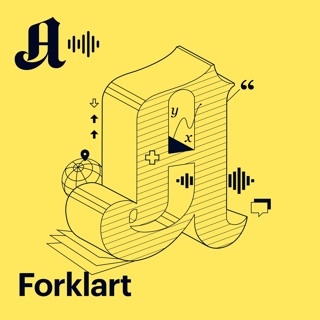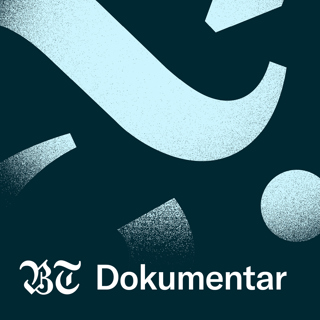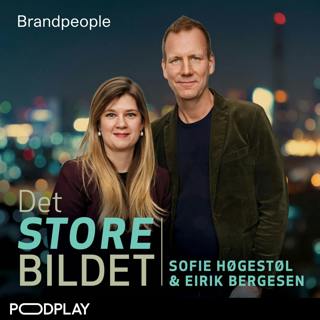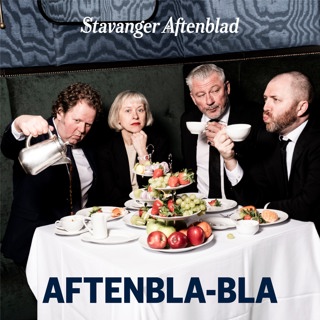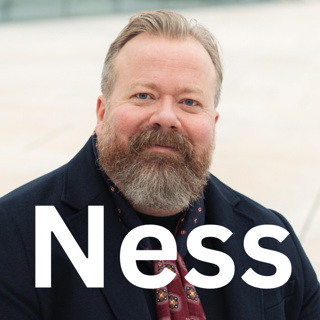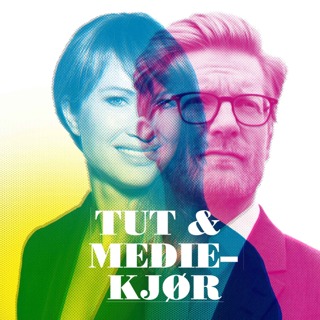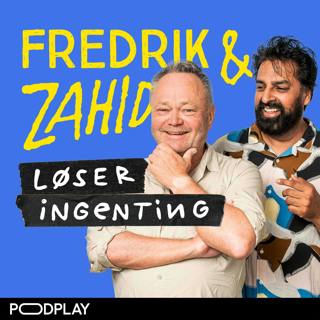
Fashion's Creative Shakeup: Industry Leaders Redefine Luxury Brands
FASHION INDUSTRY PULSE: CREATIVE DIRECTOR SHUFFLE CONTINUESThe fashion industry has experienced significant leadership changes in the past 48 hours, continuing what industry insiders are calling "creative director musical chairs." Most notably, Maria Grazia Chiuri has stepped down from her position as creative director of womenswear at Dior, following the earlier departure of Kim Jones from Dior menswear[1].In a surprising development announced just yesterday, Jonathan Anderson will now take on dual responsibilities at Dior, serving as creative director for both menswear and the newly added roles of haute couture and womenswear[1]. This appointment comes as Anderson was already transitioning from his previous position at Loewe.The industry continues to see major reshuffling across luxury houses. Jack McCollough and Lazaro Hernandez, co-founders of Proenza Schouler, have moved to Loewe as co-creative directors. Demna has left Balenciaga to lead Gucci, while Pierpaolo Piccioli has moved from Valentino to fill Demna's former position at Balenciaga[1][3].At Versace, a significant chapter is closing as Donatella Versace passes creative control to Dario Vitale after nearly three decades at the helm, following Versace's acquisition by Prada Group[1][3].These changes come at a challenging time for the fashion industry. After achieving record economic profits in 2022, the sector faced slowing growth throughout 2023, particularly in Europe and the US, with even luxury brands beginning to feel pressure after a prolonged growth period[5].Industry experts are watching to see how these creative leadership changes might revitalize major fashion houses and potentially spark the "much-needed creative transformation" that The Business of Fashion suggests the industry requires[3]. The current creative director reshuffle represents one of the most significant periods of simultaneous leadership change the fashion industry has seen in recent years.This content was created in partnership and with the help of Artificial Intelligence AI
3 Jun 2min

Butter Yellow Emerges as the New Neutral in European Fashion - Paris Men's Shows, Milan Street Style, and Industry Insights
FASHION INDUSTRY UPDATE: JUNE 2025The fashion world is buzzing this week with notable developments across multiple segments. Matthew M. Williams has just announced his return to the industry with a new namesake clothing brand, set to debut at Paris Men's Fashion Week later this month. The prestigious event, scheduled for June 24-29, will showcase Spring/Summer 2026 collections from leading designers[1].In Milan, street style has been evolving with a distinct Italian summer aesthetic captured in recent documentation of everyday fashion. The city continues to influence global trends with its signature combination of effortless elegance, focusing on breathable fabrics and tailored linen pieces ideal for warmer months[4].Perhaps the most significant trend emerging in European fashion this week is the rise of butter yellow as "the new neutral." This soft, mellow hue is appearing everywhere from high-end couture to mainstream retail. Luxury brands like Alaia, Toteme, and 16Arlington have prominently featured this color in their SS25 collections. Selfridges buying manager Laurie Field confirms the shade's growing popularity across multiple silhouettes and accessories[5].The trend has democratized across price points, with Uniqlo incorporating butter yellow into their current offerings under the guidance of creative director Clare Waight Keller, who brings her experience from Givenchy, Chloe, and Gucci to the high street retailer[5].Industry networking continues to thrive with events like the Fashion Industry Insider Monthly Meetup scheduled for June 27th in New York City, providing opportunities for professionals to connect and discover emerging talents[2].Spotlyts Magazine has dedicated June 2025 as "Fashion Month," exploring the cyclical nature of fashion trends, examining how vintage elements are being reimagined, and investigating how emerging technologies like AI are reshaping design processes[3].As the industry moves further into summer, these developments reflect fashion's ongoing evolution and its delicate balance between honoring tradition and embracing innovation.This content was created in partnership and with the help of Artificial Intelligence AI
2 Jun 2min

Fashion's Pivotal Shift: Navigating Disruption, Sustainability, and Global Trends
In the past 48 hours, the global fashion industry has experienced significant developments, reflecting both continuity and disruption. Major creative shifts are underway at the top, with Demna appointed as artistic director at Gucci and Dario Vitale taking over from Donatella Versace after her nearly three-decade tenure. These leadership changes are expected to drive a new phase of creative transformation across the sector, with industry observers anticipating fresh design directions and revitalized brand identities.On the international stage, the Morocco Textile Expo opened this week, hosting more than 440 exhibitors from 13 countries and attracting nearly 20,000 textile professionals. This event highlights North Africa's growing role as a sourcing and innovation hub, with key emphasis on new textile technologies, sustainable materials, and design trends that reflect both African and Mediterranean influences. Experts note that supply chain reconfiguration is accelerating, with brands increasingly favoring nearshoring and partnerships in geopolitically aligned countries to build resilience and reduce risks associated with global disruptions.Emerging competitors, particularly challenger brands and innovative sportswear companies, are gaining market share at the expense of industry incumbents. These newcomers are leveraging technology and fresh business models to respond swiftly to shifting consumer demand. Notably, fashion houses are now targeting the "silver generation," or shoppers over 50, who represent a growing proportion of spending—marking a shift from the industry’s traditional focus on younger consumers.Sustainability remains a top agenda item, driven by government pressure and mounting climate costs, even though data suggests consumers remain hesitant to pay a premium for eco-friendly products. Brands investing in sustainable operations and waste reduction are expected to gain long-term competitive advantages.Legally, the industry is also highly litigious, with recent lawsuits focused on false advertising and intellectual property disputes. Price volatility is notable, with margin pressures compounded by global inflation and supply chain tightness.Compared to earlier reporting this year, the past week has shown a faster pace of strategic pivots among fashion leaders, more urgent efforts to streamline inventories, and a marked openness to cross-continental partnerships. This signals an industry that is adapting rapidly but remains challenged by uncertainty, competitive fragmentation, and ongoing market shifts.This content was created in partnership and with the help of Artificial Intelligence AI
30 Mai 2min

Fashion's Resilience: Tackling Inflation, Sustainability, and AI-Driven Innovation in 2025
Fashion Industry in Mid-2025: Navigating Challenges and InnovationsThe fashion industry continues to face significant economic headwinds in May 2025, with growth remaining low though slightly improved from previous quarters. Industry executives are grappling with persistent uncertainty stemming from cautious economic outlooks, stubborn inflation pressures, and weakened consumer confidence.Recent data shows inflation remains a primary concern for 32% of consumers across 29 countries, driving notable shifts in purchasing behavior. Over 75% of shoppers are now opting for lower-cost alternatives, with 86% of Gen Z and millennials specifically prioritizing value shopping while simultaneously demanding sustainable options and tech-enabled experiences.The industry is responding to these challenges through several key trends. Fashion brands are increasingly focused on developing more granular approaches to brand performance measurement to better navigate market volatility. Companies are also working to balance necessary price increases against consumer perceptions of value—a particularly delicate equation in the current economic climate.Environmental regulations continue to tighten across global markets, pushing brands toward more sustainable practices. Meanwhile, artificial intelligence has emerged as a critical driver of both efficiency and innovation, with companies like Heuritech employing advanced machine learning algorithms to analyze social media data for real-time trend forecasting.Looking toward the remainder of 2025, industry analysts project the global fashion market to continue its trajectory toward an estimated $3.3 trillion valuation by 2030. New geographic markets are emerging as significant growth opportunities, offering potential relief from saturated traditional markets.On the trend front, forecasts for the upcoming seasons highlight boho chic in suede, vibrant yellow tones, hot pants, aquatic influences, and asymmetrical designs as key style directions. These trends reflect the industry's ongoing balance between responding to immediate economic pressures and pushing forward with creative innovation.This content was created in partnership and with the help of Artificial Intelligence AI
29 Mai 2min

Adapting to Inflation, Sustainability, and Tech Trends in Fashion's Evolving Landscape
Fashion Industry Update: Navigating Challenges in Mid-2025The fashion industry continues to face economic headwinds in May 2025, with persistent uncertainty remaining the primary challenge for industry leaders. Recent data indicates that inflation concerns are still impacting consumer behavior, with 32% of consumers across 29 countries identifying inflation as their main worry. This has led to over 75% of shoppers opting for lower-cost alternatives, significantly affecting purchasing patterns.Industry growth is expected to remain low but show a slight increase compared to early 2025, according to the latest BoF-McKinsey analysis. Fashion executives are focusing on adaptability as they contend with stubborn inflation pressures and weakened consumer confidence.Sustainability remains a driving force in the industry's transformation. Brands are increasingly investing in eco-friendly practices as they prepare for stricter environmental regulations anticipated later this year. By 2025's end, a brand's performance will no longer be strictly tied to its category (luxury, mid-market, or fast fashion) but will depend on its adaptation to these new sustainability standards.Current trend forecasts for the remainder of 2025 highlight several key styles gaining momentum: boho chic in suede, various shades of yellow, and aquatic influences are among the top trends. Additionally, gender-neutral fashion options and age-inclusive designs are becoming mainstream as the industry embraces greater inclusivity.Technology continues to reshape the fashion landscape, with AI-powered shopping experiences and social commerce seeing significant growth. These innovations are helping brands create more personalized customer experiences while improving operational efficiency.The industry's projected path toward $3.3 trillion by 2030 remains on track, though navigating the current economic climate requires careful strategic planning. As fashion leaders respond to these challenges, the focus on balancing innovation with cost management has become paramount in maintaining competitive advantage in this evolving market.This content was created in partnership and with the help of Artificial Intelligence AI
28 Mai 2min

Fashion Industry 2025: Navigating Economic Headwinds and Demographic Shifts
Fashion Industry Current State Analysis - May 2025The fashion industry continues to navigate significant economic headwinds as we approach mid-2025, with persistent uncertainty remaining the primary challenge for industry leaders. According to recent data, only 20 percent of fashion executives expect improvements in consumer sentiment this year, while 39 percent anticipate worsening industry conditions.Inflation remains a key concern, with 32 percent of consumers across 29 countries identifying it as their primary worry. This has driven over 75 percent of shoppers to seek lower-cost alternatives, with Gen Z and millennials particularly price-conscious - 86 percent now prioritize value shopping.In response, many brands are pivoting their strategies. There's a notable shift toward courting the "silver generation" of over-50 customers, a demographic previously overlooked despite representing growing fashion spending power. Simultaneously, we're seeing increased focus on age-inclusive designs, gender-neutral options, and adaptive clothing.Supply chain reconfiguration continues to accelerate, with nearshoring and manufacturing in geopolitically aligned countries becoming priorities. This trend has intensified following Donald Trump's return to the presidency and his renewed commitment to tariffs, which threatens to increase costs for imported finished goods and supplies.In terms of product trends, forecasts for the remainder of 2025 point toward boho chic in suede, yellow tones, sportswear, and aquatic influences dominating consumer preferences.Sustainability remains crucial despite economic pressures. While consumers have proven reluctant to pay premiums for eco-friendly products, mounting climate change costs and government regulations are keeping sustainability at the top of the agenda for forward-thinking brands.The industry is projected to reach $3.3 trillion by 2030, highlighting the significant growth potential amid these transformative challenges. Companies that can successfully balance economic pressures with innovation, sustainability initiatives, and targeted demographic strategies will likely emerge strongest in this evolving landscape.This content was created in partnership and with the help of Artificial Intelligence AI
27 Mai 2min

Fashion's Resilience and Transformation: Navigating Disruption and Reinvention
Over the past 48 hours, the fashion industry has demonstrated a blend of resilience and transformation amid ongoing economic and operational disruptions. Notably, luxury conglomerate Richemont reported a 4 percent overall revenue increase for the fiscal year, propelled by fine jewelry sales, despite ongoing struggles in its watch division. In contrast, Ferragamo saw Asia Pacific sales decline by 13 percent, and American Eagle Outfitters experienced a 5 percent revenue drop and notable inventory write-downs. Meanwhile, Burberry responded to a steep profit decline by announcing 1700 job cuts and a renewed focus on heritage products and smarter inventory management. These examples underscore how both legacy and contemporary brands are adapting to margin pressure and regional volatility.Several major leadership changes also signal creative shifts. Demna’s move to Gucci and the transition of Donatella Versace’s creative responsibilities to Dario Vitale suggest that fashion’s powerhouse brands are seeking revitalization through new artistic direction. In the retail sector, Crocs recently appointed Terence Reilly as Chief Brand Officer, underscoring the industry’s focus on brand differentiation and innovation[2][3].Product innovation and bold collaborations remain central. The “Reformation x Devon Lee Carlson” capsule, featuring sustainable, retro-modern pieces, exemplifies how eco-consciousness and nostalgia are shaping product strategies. Playful launches like “Cheetos Pants” and the Dr. Martens x Palace partnership highlight the drive for storytelling and cultural relevance in new collections. Nike’s launch of a vivid new Shox TL model reflects continued investment in color innovation and trend-setting design[1].Supply chains are under considerable pressure. Persistent issues with raw material procurement, labor, and logistics continue to disrupt flows and raise costs. According to a recent survey, 39 percent of industry executives expect conditions to worsen this year, with only 20 percent predicting improvement. Price increases, such as those announced by athletics brand On, are becoming more common as brands seek to position themselves as premium and offset costs[4][5].Compared to earlier in the year, today’s fashion industry is characterized by sharper regional sales disparities, increased operational streamlining, and aggressive creative pivots. Brands that can adapt quickly, focus on core strengths, and stay close to evolving consumer values are best positioned to weather ongoing instability and emerge stronger in 2025.This content was created in partnership and with the help of Artificial Intelligence AI
23 Mai 2min

Navigating Fashion's Uncertain Future: Strategies for Success in 2025
The Fashion Industry in 2025: Navigating Economic Headwinds and InnovationThe fashion industry continues to face significant challenges in 2025, with economic uncertainty dominating the landscape. Industry executives are notably pessimistic about the current market conditions, with 39% anticipating worsening industry conditions while 41% expect the market to remain stagnant[5]. This sentiment reflects broader economic concerns including persistent inflation, muted growth, and declining consumer confidence that have characterized the industry throughout early 2025[1].Supply chains remain under "incredible duress" according to recent reports, with raw material procurement, labor issues, and logistics management presenting substantial hurdles for fashion companies[5]. These challenges are forcing brands to reconsider their operational strategies and seek more resilient supply chain solutions.Consumer behavior continues to shift dramatically, with over 75% of shoppers opting for lower-cost alternatives amid inflation concerns[1]. This value-seeking trend is particularly pronounced among younger demographics, with 86% of Gen Z and millennials prioritizing budget-friendly options[1].Despite these challenges, several key fashion trends are emerging in 2025. Boho chic in suede, vibrant yellow shades, hot pants, aquatic-inspired designs, and sportswear with feminine touches are among the top trends currently gaining traction[4]. These trends reflect consumers' desire for both comfort and expression in uncertain times.The industry is expected to reach $3.3 trillion by 2030, suggesting long-term growth potential despite current difficulties[1]. Forward-thinking brands are leveraging technological innovations and sustainability initiatives to differentiate themselves.McKinsey's State of Fashion 2025 report characterizes this year as "a time of reckoning for many brands," yet emphasizes that "there is still opportunity to be found for brands that move nimbly and are quick to adapt to upheavals in a chaotic marketplace"[5]. This suggests that agility and innovation will be key determinants of success as the fashion industry navigates these turbulent waters.This content was created in partnership and with the help of Artificial Intelligence AI
22 Mai 2min





